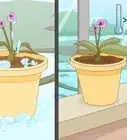This article was co-authored by Monique Capanelli. Monique Capanelli is a Plant Specialist and the Owner and Designer for Articulture Designs, an innovative design firm and boutique in Austin, Texas. With over 15 years of experience, Monique specializes in interior botanical design, living walls, event decor, and sustainable landscape design. She attended the University of Texas at Austin. Monique is a Certified Permaculture Designer. She provides plant and botanical design experiences, from small gifts to entire transformations, to shoppers as well as commercial clients including Whole Foods Market and The Four Seasons.
There are 20 references cited in this article, which can be found at the bottom of the page.
wikiHow marks an article as reader-approved once it receives enough positive feedback. This article received 21 testimonials and 100% of readers who voted found it helpful, earning it our reader-approved status.
This article has been viewed 377,373 times.
Caring for mini orchids is very similar to caring for standard orchid varieties. Like their standard-sized counterparts, mini orchids thrive in warm, humid conditions with semi-dry roots. Mini orchids tend to be a little more sensitive, however, and require less watering and less frequent fertilization. Mini orchids, like their standard-variety cousins, also need to be re-potted every few years in order to remain healthy.
Steps
Daily Care
-
1Water your orchid when it starts drying out. Put your finger or the point of a sharpened pencil into the growing medium; if the soil feels dry, water your plant by placing it under lukewarm, running water in your sink for about 15 seconds, then allow the excess water to drain for about 15 minutes after that.[1]
- Overwatering can kill your orchid, so it's important to prevent the roots from sitting in soggy soil.
- Phalaenopsis and paphiopedilums should be watered before the soil completely dries out, while cattleyas and oncidiums need the soil to dry completely between waterings.[2]
- Contrary to popular belief, you should not water your orchid with ice. It's not the only way to avoid overwatering your orchid, and the cold ice can stress the plant and decrease its lifespan.[3]
-
2Check the growing media for dryness every few days. In most cases, a 6-inch (15.24-cm) pot will need water once every week. Smaller pots will need water a little more often.[4] However, in excessively hot or dry conditions, you may need to add an additional sprinkle of water in the middle of the week. Allow the media to get partially dry, but add more water once it feels dry even 2 inches (5.08 centimeters) below the surface.Advertisement
-
3
-
4Supplement artificial lighting when you cannot provide enough natural light. Fluorescent lights or High Intensity Discharge lights offer the best alternatives. Place the lights 6 to 12 inches (15.24 to 30.48 centimeters) away from the top of your mini orchid to prevent accidental over-lighting.[8]
-
5Keep an eye on the foliage. You can usually determine whether or not your orchid receives the right amount of light based on the way its leaves look. Too little light will result in dark green leaves with no flowers. Too much light will cause the leaves to turn yellow or red. Some leaves may even develop brown "sunburn" spots.[9]
-
6Maintain a room temperature between 65 and 85 degrees Fahrenheit (18 and 29 degrees Celsius). Mini orchids thrive in warm, humid conditions. For best results, keep the temperature on the high end of the scale during the day and drop it by about 15 degrees Fahrenheit (8 degrees Celsius) at night. Never allow the temperature to drop below 55 degrees Fahrenheit (13 degrees Celsius), however.[10]
-
7Do not place the flower in a drafty area. Avoid letting it sit near open windows and air vents.
-
8Periodically mist the leaves of the mini orchid. Orchids like humid conditions, and misting the plant every day or two will mimic humidity. If this does not work, run a humidifier in the same room during the day.
-
9Fertilize your mini orchid once a month.[11] Use a balanced fertilizer and mix it with water, diluting it down to half its recommended strength.[12] If this fertilizer does not seem to do well for your plant, you can also try a high-nitrogen fertilizer, especially if you use a bark-based growing media.
- Make sure the fertilizer contains little to no urea.
- Another option is to fertilize your orchid once per week, right after you water it, by diluting a balanced fertilizer safe for use with container plants down to 1/4 strength, to further reduce the risk of feeding it too much at one time.[13]
Potting and Re-potting
-
1Choose a slightly larger container than the one your orchid currently sits in. Mini orchids have fast-growing roots, and one of the main reasons you need to periodically repot your orchids is to provide the roots with plenty of room. The new pot only needs to be large enough to fit the roots; you do not need to choose a pot that is significantly larger to anticipate further root growth.[14]
-
2Look for a growing media that has large particles. Media with a base of moss and bark is superior to standard potting soil.[15]
-
3Allow the growing media to soak in water. For best results, let the drenched media sit for a full 24 hours so that it thoroughly absorbs the water.
-
4Trim the spikes. Snip off green spikes 1 inch (2.54 centimeters) above the top node. Trim yellow or brown spikes 1 inch (2.54 centimeters) above the bottom node.
-
5Carefully remove the mini orchid from its current container. Gently grab the base of the orchid with one hand and the pot with your other. Tip the mini orchid to its side or upside-down, and slowly squeeze or rotate the sides of the pot until the clump of roots comes free.
-
6Brush off any planting media stuck to the roots. Media breaks down as time passes, and old, decomposed media is more likely to cause your orchid's roots to rot. As a result, you need to remove as much old media as possible without damaging the roots.
-
7Snip away dead roots. Dead roots with look brown and wilted. Healthy roots, on the other hand, are white or green and relatively firm.
-
8Scatter a little of the growing media into the bottom of your new container. You only need a little, since the mini orchid's roots should fill the majority of the container.[16]
-
9Fit the mini orchid into its new container. Hold the orchid up so that the base of the lowest leaf dips below the rim of the pot by 1/2 inch (1.27 centimeters).[17]
-
10Slowly pour the growing media around the mini orchid's roots. Press down on the media gently to force it into the bottom and around the sides of the container. Periodically tap the side of the container to help settle it. Continue adding the media until the entire root system is covered, leaving the plant exposed from the bottom leaf up.[18]
-
11Check the sturdiness of your re-potted mini orchid. Lift the plant up by the stem. If the pot starts to slip, you need to add more media to make the orchid more secure.[19]
-
12Refrain from watering your freshly potted orchid for the first 10 days. Instead, sit it in a warm location and mist it with a little water each day. The leaves should stay dry at night.
-
13Repot your mini orchids every two years. Mini orchids may need re-potting as often as every one year, but some can even go as long as three years without any damage occurring. If your media starts to smell or if the roots of your flower look choked, you know it is time for you to repot.
Expert Q&A
Did you know you can get expert answers for this article?
Unlock expert answers by supporting wikiHow
-
QuestionDoes it matter what type of water I use to water my orchid?
 Monique CapanelliMonique Capanelli is a Plant Specialist and the Owner and Designer for Articulture Designs, an innovative design firm and boutique in Austin, Texas. With over 15 years of experience, Monique specializes in interior botanical design, living walls, event decor, and sustainable landscape design. She attended the University of Texas at Austin. Monique is a Certified Permaculture Designer. She provides plant and botanical design experiences, from small gifts to entire transformations, to shoppers as well as commercial clients including Whole Foods Market and The Four Seasons.
Monique CapanelliMonique Capanelli is a Plant Specialist and the Owner and Designer for Articulture Designs, an innovative design firm and boutique in Austin, Texas. With over 15 years of experience, Monique specializes in interior botanical design, living walls, event decor, and sustainable landscape design. She attended the University of Texas at Austin. Monique is a Certified Permaculture Designer. She provides plant and botanical design experiences, from small gifts to entire transformations, to shoppers as well as commercial clients including Whole Foods Market and The Four Seasons.
Plant Specialist
-
QuestionHow do I care for orchids outside?
 Monique CapanelliMonique Capanelli is a Plant Specialist and the Owner and Designer for Articulture Designs, an innovative design firm and boutique in Austin, Texas. With over 15 years of experience, Monique specializes in interior botanical design, living walls, event decor, and sustainable landscape design. She attended the University of Texas at Austin. Monique is a Certified Permaculture Designer. She provides plant and botanical design experiences, from small gifts to entire transformations, to shoppers as well as commercial clients including Whole Foods Market and The Four Seasons.
Monique CapanelliMonique Capanelli is a Plant Specialist and the Owner and Designer for Articulture Designs, an innovative design firm and boutique in Austin, Texas. With over 15 years of experience, Monique specializes in interior botanical design, living walls, event decor, and sustainable landscape design. She attended the University of Texas at Austin. Monique is a Certified Permaculture Designer. She provides plant and botanical design experiences, from small gifts to entire transformations, to shoppers as well as commercial clients including Whole Foods Market and The Four Seasons.
Plant Specialist The good thing about outdoor orchids is that you hopefully shouldn't need to do very much as long as they're in the right environment outside. Orchids like dappled sunlight. They naturally grow on rocks and tree trunks. So putting your orchid in a nice hanging basket or wiring it to a tree should work great. Of course, if you don't get a lot of rain or humidity, you'll need to water the orchid yourself.
The good thing about outdoor orchids is that you hopefully shouldn't need to do very much as long as they're in the right environment outside. Orchids like dappled sunlight. They naturally grow on rocks and tree trunks. So putting your orchid in a nice hanging basket or wiring it to a tree should work great. Of course, if you don't get a lot of rain or humidity, you'll need to water the orchid yourself. -
QuestionHow much time should I leave the orchid plant in the light?
 Community AnswerIt should live in bright, but not direct sun, conditions. Do not move it daily.
Community AnswerIt should live in bright, but not direct sun, conditions. Do not move it daily.
Things You'll Need
- Coarse growing media
- Larger pot or other container
- Spray bottle or mister
- Humidifier
- Grow lights
- Fertilizer
References
- ↑ http://www.aos.org/orchids/orchid-care/how-do-i-water-my-orchid.aspx
- ↑ http://www.aos.org/orchids/culture-sheets/novice-watering-know-how.aspx
- ↑ http://oregonorchidsociety.org/ice-cubes-and-orchids
- ↑ http://www.beautifulorchids.com/orchids/orchid_care_tips/watering/watering.html
- ↑ http://www.beautifulorchids.com/orchids/orchid_care_tips/light/light.html
- ↑ http://www.aos.org/orchids/additional-resources/light-the-key-to-successful-blooming.aspx
- ↑ Monique Capanelli. Plant Specialist. Expert Interview. 22 September 2020.
- ↑ https://www.dummies.com/home-garden/gardening/flower-gardening/how-to-grow-orchids-under-artificial-light/
- ↑ http://www.aos.org/orchids/additional-resources/light-the-key-to-successful-blooming.aspx
- ↑ https://www.rhs.org.uk/advice/profile?pid=333
- ↑ https://www.justaddiceorchids.com/just-add-ice-orchid-blog/bid/91537/how-to-fertilize-orchids
- ↑ http://www.aos.org/orchids/orchid-care/how-do-i-feed-my-orchid.aspx
- ↑ http://www.aos.org/orchids/orchid-care/how-do-i-feed-my-orchid.aspx
- ↑ http://www.aos.org/orchids/orchid-care/when-should-i-repot.aspx
- ↑ http://www.aos.org/orchids/additional-resources/potting-media-reviewed.aspx
- ↑ https://youtu.be/oedy6hZdE_k?t=216
- ↑ https://youtu.be/oedy6hZdE_k?t=224
- ↑ https://www.dummies.com/home-garden/gardening/flower-gardening/how-to-repot-an-orchid/
- ↑ https://www.dummies.com/home-garden/gardening/flower-gardening/how-to-repot-an-orchid/
- https://www.dummies.com/home-garden/gardening/flower-gardening/how-to-fertilize-your-orchid/
- https://www.dummies.com/home-garden/gardening/flower-gardening/how-to-provide-humidity-for-orchids/
- Just Add Ice Orchids: Orchid Minis
- Just Add Ice Orchids: Repotting Orchids
About This Article
Mini orchids thrive in warm, humid conditions with semi-dry roots to remain healthy. Put your mini orchid in a sunny spot, but avoid direct sunlight. You can also supplement with artificial lighting, like fluorescent lights or high-intensity discharge lights, when you can’t give it enough natural light. In addition to light, mini orchids need a warm room temperature, so keep the thermostat between 65 and 85 degrees Fahrenheit. If you live in an arid area, mist the leaves every day or two to mimic humid conditions. Instead of watering your orchid, put 1 ice cube in the pot every week to keep it from getting overwatered. To learn how to re-pot your mini orchid every few years, keep reading!
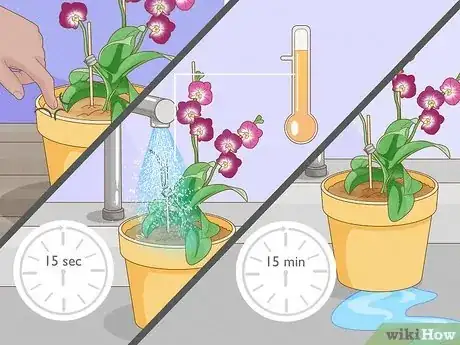
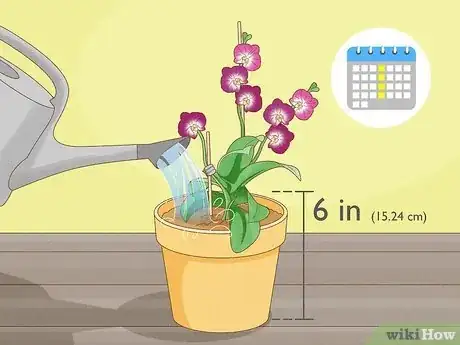
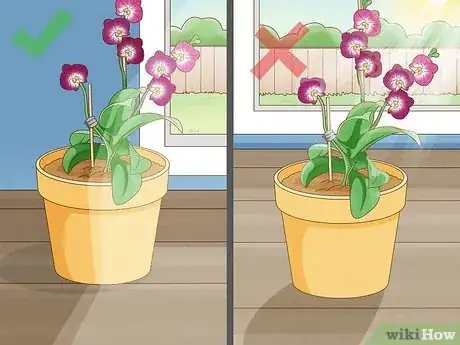

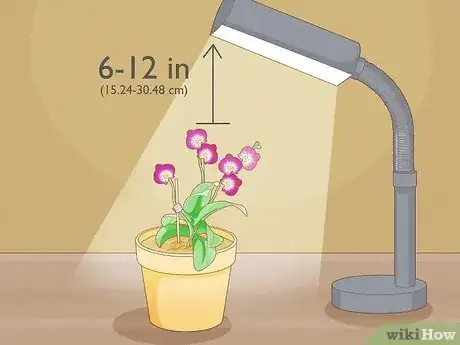
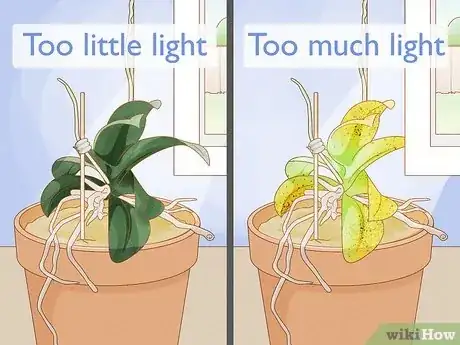
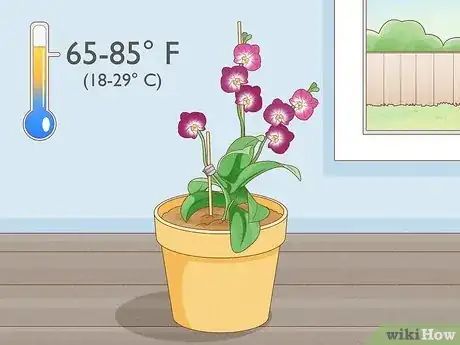
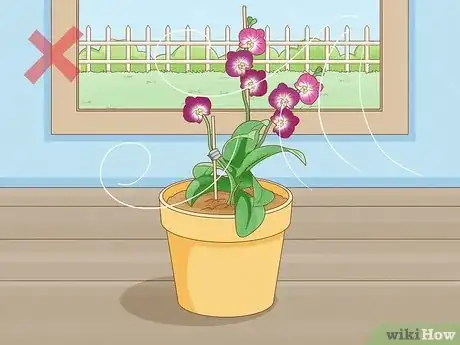
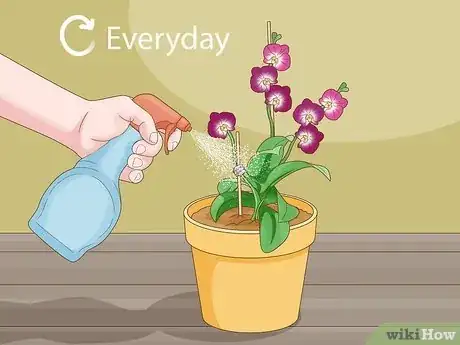
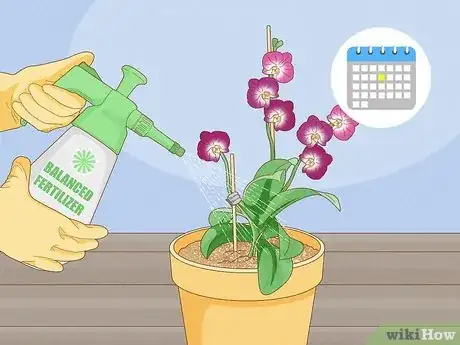
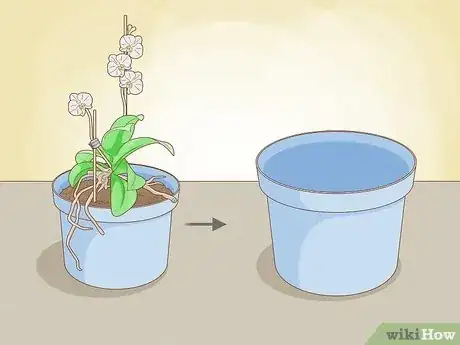
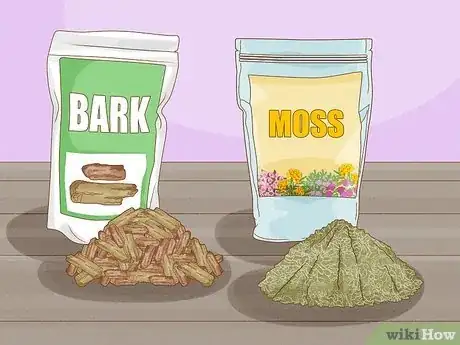
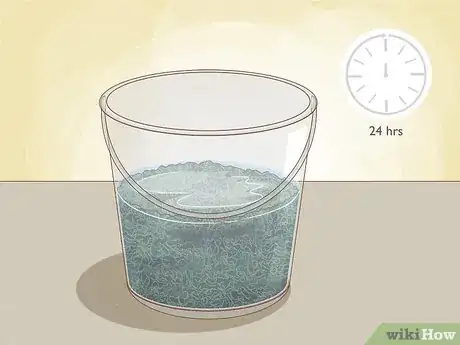
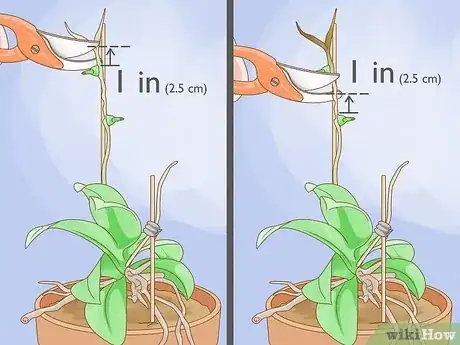
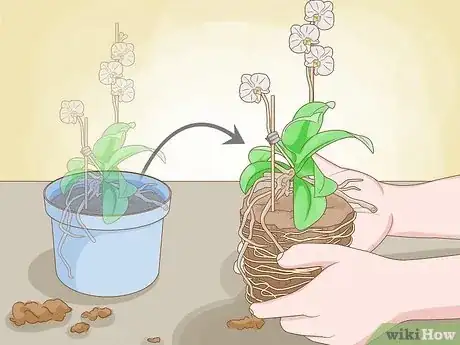
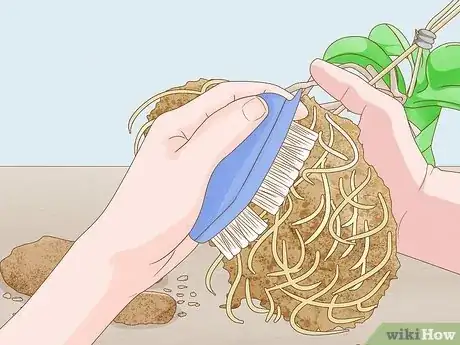
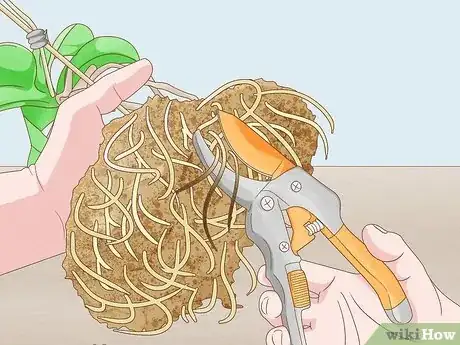
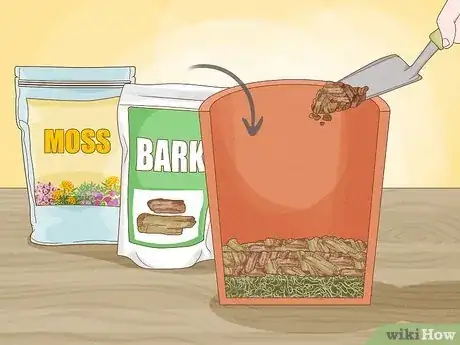
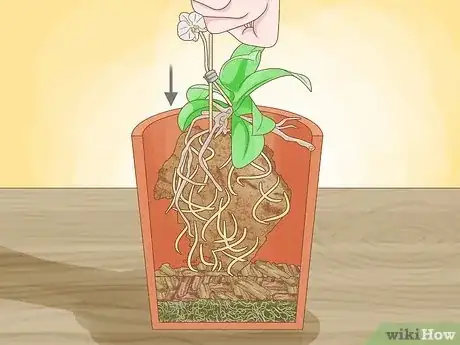
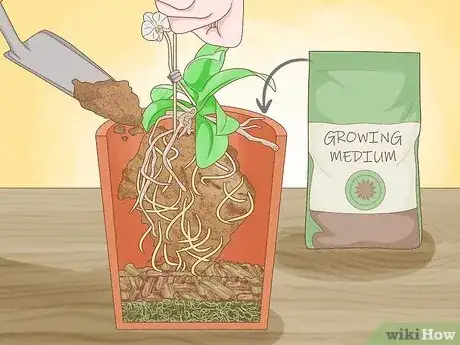
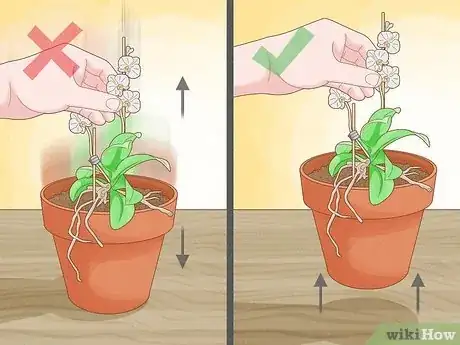
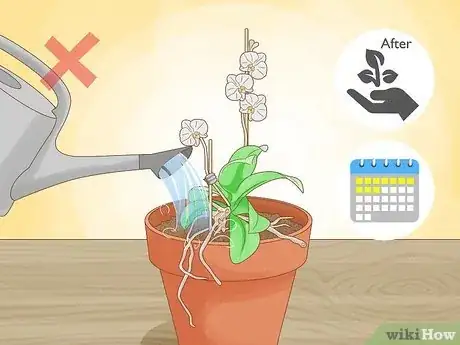
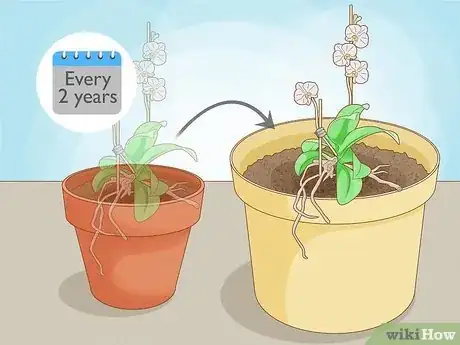

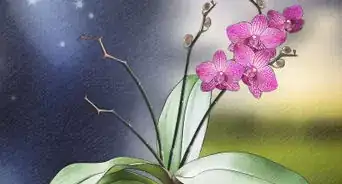
-Step-8.webp)
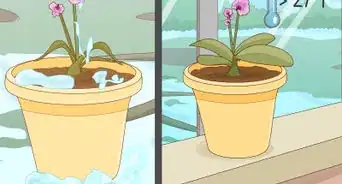
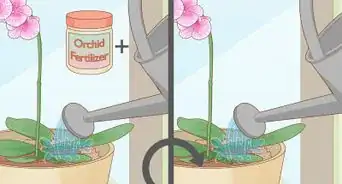
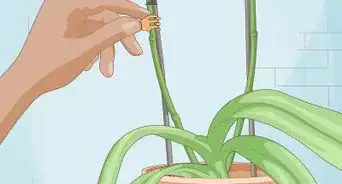
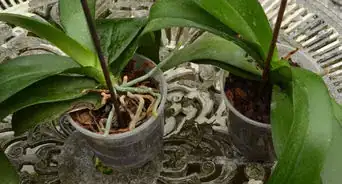


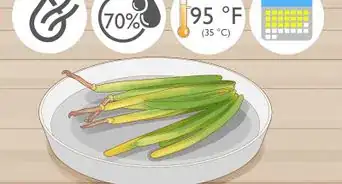
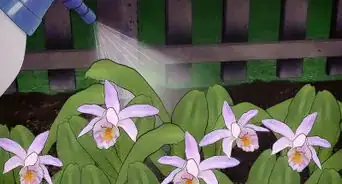
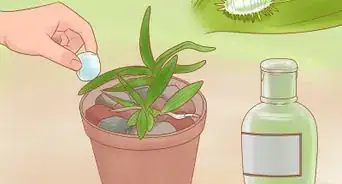
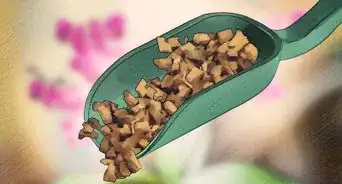
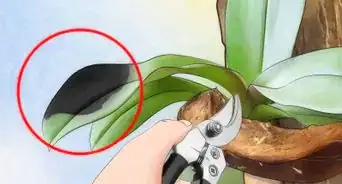








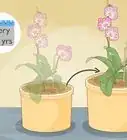

-Step-8.webp)
